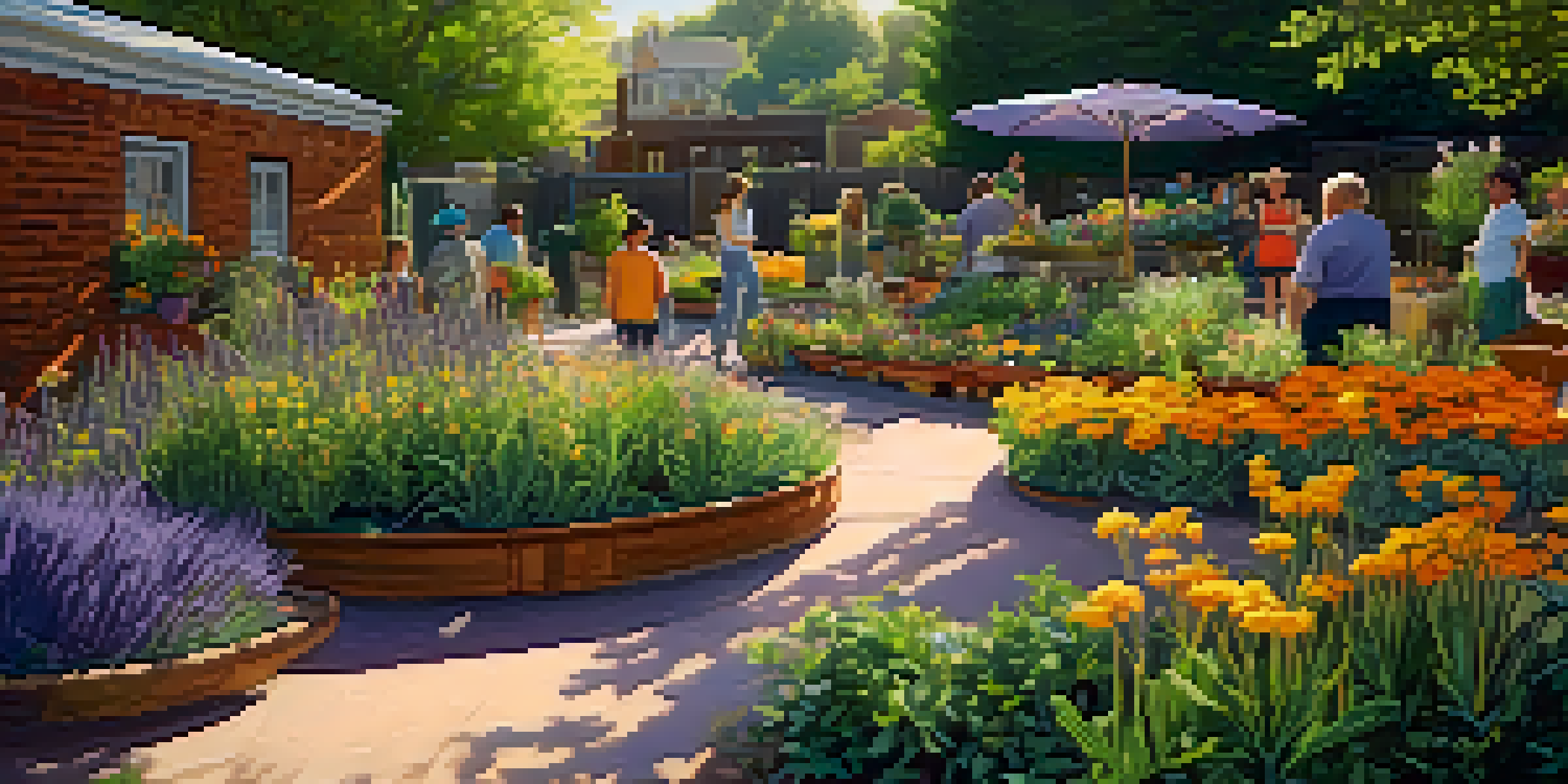Top Outdoor Plants for Reducing Urban Air Pollution

Understanding Urban Air Pollution and Its Impact
Urban air pollution is a growing concern, especially in bustling cities. It mainly stems from vehicle emissions, industrial activities, and other human-related sources. This pollution not only affects the environment but also poses serious health risks, including respiratory problems and heart disease.
The best time to plant a tree was twenty years ago. The second best time is now.
As cities expand, the need for effective solutions to combat this issue becomes vital. One of the most natural and effective ways to tackle air pollution is by incorporating plants into urban landscapes. Plants act as natural air filters, absorbing harmful pollutants and releasing oxygen, which is essential for our health.
By understanding how urban air pollution affects us, we can appreciate the role plants play in creating cleaner, healthier environments. Let’s explore some of the best outdoor plants that can help purify the air and enhance our urban spaces.
The Power of Trees in Urban Areas
Trees are often considered the lungs of our cities. They absorb carbon dioxide and other pollutants, while releasing oxygen, making them essential for urban air quality. Additionally, their shade helps cool urban heat islands, further improving local climates.

Species like the London Plane tree and the Red Maple are particularly effective in urban settings. They have a robust structure and can tolerate pollution, making them ideal for planting along streets and in parks. Moreover, their extensive root systems help prevent soil erosion and manage stormwater.
Plants Improve Urban Air Quality
Incorporating various plants in urban environments can significantly enhance air quality while providing essential benefits for health and biodiversity.
Incorporating more trees into city planning can significantly improve air quality. As they grow, they not only beautify our surroundings but also create a healthier living environment for everyone.
Shrubs: The Unsung Heroes of Air Purification
While trees often steal the spotlight, shrubs play a crucial role in fighting urban air pollution too. They are versatile and can fit into smaller spaces, making them ideal for urban gardens and landscaping. Shrubs like the Boxwood and Juniper are excellent choices for their air-cleaning properties.
Nature does not hurry, yet everything is accomplished.
These plants can filter pollutants and provide a habitat for urban wildlife, promoting biodiversity. By planting shrubs around homes and businesses, we can create a greener urban landscape that benefits both people and the environment.
Moreover, shrubs can act as natural sound barriers, further enhancing the quality of life in busy urban areas. Their ability to absorb noise and filter air makes them a fantastic addition to any urban garden.
Flowering Plants That Enhance Air Quality
Flowering plants do more than just add color to our streets; they also improve air quality. Species such as Lavender and Marigold not only beautify urban spaces but also have air-purifying abilities. They can absorb toxins and provide essential nectar for pollinators.
Incorporating flowering plants into urban gardens can create vibrant spaces that attract bees, butterflies, and other beneficial insects. This not only helps with air quality but also encourages a thriving ecosystem right in the heart of the city.
Community Gardens Foster Engagement
Community gardens not only contribute to cleaner air but also promote social interaction and education about sustainable practices.
Moreover, these plants can thrive in containers or small patches, making them suitable for balconies and patios. By choosing the right flowering plants, we can create lush, fragrant spaces that contribute positively to our urban environment.
Indoor Plants That Thrive Outdoors
Certain indoor plants can also thrive outdoors and contribute to improving air quality. Plants like the Snake Plant and Peace Lily are known for their air-purifying qualities and can adapt well to outdoor conditions. They excel at filtering out harmful substances such as formaldehyde and benzene.
By placing these plants on patios or in small gardens, urban dwellers can extend their air-cleaning benefits beyond the indoor space. They not only purify the air but also add a touch of greenery to outdoor settings.
Creating a seamless transition between indoor and outdoor spaces with these plants can enhance overall well-being, making urban living a bit more refreshing and enjoyable.
Community Gardens: A Collective Approach
Community gardens are a fantastic way to tackle urban air pollution collectively. By bringing together residents to cultivate plants, these gardens not only improve air quality but also foster a sense of community. They provide a space for people to engage with nature and learn about the benefits of green spaces.
In these gardens, a variety of plants can be grown, from trees to flowering plants, contributing to a healthier urban environment. The combined efforts of community members can lead to significant improvements in local air quality and provide fresh produce.
Choose Native Plants for Success
Selecting native plants is crucial for ensuring they thrive in local conditions and effectively combat air pollution.
Moreover, community gardens can serve as educational hubs, teaching residents about sustainable gardening practices and the importance of plants in combating pollution. This sense of ownership and teamwork can create lasting positive changes in urban areas.
Choosing the Right Plants for Your Urban Space
When selecting plants for urban environments, it's essential to consider factors such as the local climate, space availability, and maintenance requirements. Native plants are often the best choice as they are adapted to local conditions and require less water and care.
Additionally, consider the plants' pollution absorption capabilities. Many resources are available to help identify which species are most effective for your area. Local gardening centers and environmental organizations can provide valuable insights.

Ultimately, choosing the right plants not only contributes to reducing air pollution but also enhances your outdoor space’s aesthetic appeal. A little planning can go a long way in creating a greener, healthier urban environment.
Conclusion: The Importance of Green Urban Spaces
In conclusion, integrating plants into urban landscapes is a powerful way to combat air pollution. From towering trees to delicate flowering plants, each species contributes uniquely to improving air quality. As urban areas continue to grow, prioritizing green spaces becomes increasingly important.
Not only do these plants enhance the environment, but they also promote well-being and community engagement. By taking action, whether through personal gardens or community initiatives, we can all play a part in creating healthier cities.
Let’s embrace the power of nature and work towards greener, cleaner urban spaces. After all, a little greenery can make a world of difference.